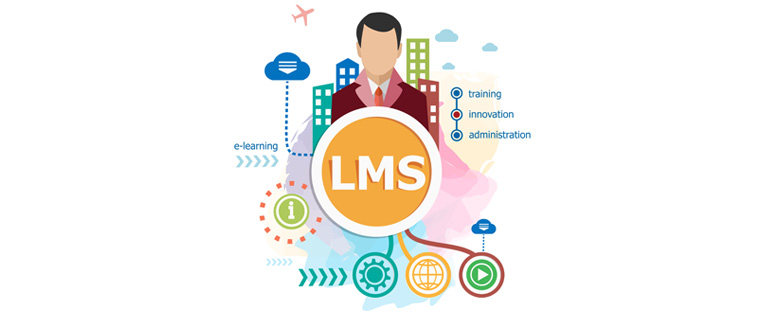In the ever-evolving world of e-learning, Learning Management Systems (LMS) play a pivotal role in enabling organizations and institutions to deliver effective digital education. Among the numerous platforms available, the Moodle based LMS stands out as one of the most versatile, customizable, and globally adopted solutions. This comprehensive guide delves into the essentials of the Moodle Learning Management System, its features, benefits, implementation strategies, and how to make the most of Moodle LMS training for learners and administrators alike.
What is Moodle LMS?
.png?width=934&height=529&name=Copy%20of%20LMS%20functionality%20pics%20(9).png)
Moodle (Modular Object-Oriented Dynamic Learning Environment) is an open-source Learning Management System (LMS) designed to help educators create personalized learning environments. The Moodle learning management system was launched in 2002 and has since grown to support tens of millions of users worldwide, from academic institutions to corporations.
Moodle is popular for its flexibility, scalability, and the vibrant global community that supports its development. It allows users to design, manage, and deliver online learning through a wide variety of tools and plugins.
Why Choose a Moodle Based LMS?
1. Open-Source and Cost-Effective
Being open-source, Moodle can be freely downloaded, modified, and distributed. This gives institutions the flexibility to customize their LMS without incurring heavy licensing fees.
2. Highly Customizable
Moodle’s modular architecture allows administrators to tailor the platform to specific learning goals, integrating third-party tools and themes with ease.
3. Scalable for Any Organization
Whether you’re a small training company or a large university, Moodle can scale to meet your organization’s size and complexity.
4. Comprehensive Course Management
The Moodle LMS platform supports multimedia content, quizzes, assignments, collaborative tools, and more, giving educators control over course structure and delivery.
5. Active Community and Support
A global community of developers and educators continuously improve the platform and provide a wealth of resources, documentation, and plugins.
Key Features of the Moodle Learning Management System

1. Course Creation and Management
Educators can create courses with rich multimedia content, manage assessments, monitor progress, and interact with students all in one place.
2. User Roles and Permissions
Moodle provides multiple user roles like admin, teacher, student, and guest, each with customizable permissions.
3. Mobile Compatibility
The Moodle Mobile app allows users to access content, submit assignments, and participate in discussions on the go.
4. Communication Tools
Features like forums, messaging, notifications, and chat enable effective communication and collaboration.
5. Reporting and Analytics
Moodle offers detailed insights into user activity, progress, and course completion, helping instructors identify gaps and intervene when needed.
6. Plugin Ecosystem
With thousands of available plugins, Moodle can be extended to support everything from attendance tracking to gamification.
7. Integration Capabilities
It supports integration with systems like Google Workspace, Microsoft Office 365, Zoom, and various content repositories.
Moodle LMS Training: Why It Matters

Implementing a robust Moodle LMS training program ensures that all users can effectively utilize the platform. Training typically includes:
For Administrators:
- System setup and configuration
- User and course management
- Data backup and security
For Educators:
- Course creation and instructional design
- Assessment creation and grading
- Utilizing multimedia and interactivity
For Students:
- Navigating the dashboard
- Accessing and submitting assignments
- Participating in discussions and assessments
Providing structured Moodle LMS training helps maximize return on investment, boosts engagement, and minimizes support issues.
Implementing Moodle in Your Organization
Step 1: Define Objectives
Identify your learning and business goals. Decide whether you need a cloud-hosted version like MoodleCloud or a self-hosted deployment.
Step 2: Installation and Configuration
Choose between shared hosting, VPS, or dedicated servers. Set up the Moodle environment, configure themes, and install essential plugins.
Step 3: Course Structure and Content Development
Design a course blueprint. Use SCORM packages, multimedia, and interactive tools to engage learners.
Step 4: User Onboarding and Training
Offer hands-on training for admins, educators, and students. Provide quick-start guides and support resources.
Step 5: Monitor and Improve
Track usage through analytics, collect feedback, and continuously refine the platform and learning materials.
Advantages of Using Moodle Based LMS in Different Sectors

1. Education
- Used by schools, colleges, and universities globally
- Supports blended and flipped classrooms
- Enhances student engagement and learning outcomes
2. Corporate Training
- Custom learning paths for employees
- Compliance training and certification
- Integration with HR systems
3. Government and NGOs
- Scalable training solutions
- Secure access and data protection
- Multi-language support for diverse users
Challenges and How to Overcome Them
1. Technical Complexity
Moodle setup may require technical expertise. Consider hiring a Moodle partner or consultant for smoother deployment.
2. User Adoption
Change resistance can hinder success. Solve this with proper training and demonstrating Moodle’s benefits.
3. Content Creation
Building engaging content is time-consuming. Utilize Moodle LMS training to empower educators and consider outsourcing content development.
4. Maintenance and Updates
Regular updates are necessary for security and functionality. Establish a maintenance plan and assign dedicated resources.
LMS Moodle Platform vs. Other LMS Platforms
| Feature | Moodle | Blackboard | Canvas | Google Classroom |
| Cost | Free/Open-source | Expensive | Freemium | Free |
| Customizability | High | Medium | Medium | Low |
| Plugins | Thousands | Limited | Moderate | Very few |
| Community Support | Extensive | Moderate | Moderate | Limited |
| Deployment Options | Cloud/Self-hosted | Cloud | Cloud | Cloud |
Moodle’s flexibility and strong community support make it a preferred option for organizations seeking a customizable and cost-effective LMS.
Best Practices for Using Moodle Effectively
- Keep Navigation Simple Use a clean layout and intuitive navigation to enhance user experience.
- Leverage Gamification Use badges, levels, and certificates to motivate learners.
- Blend Synchronous and Asynchronous Learning Combine live sessions with on-demand content to accommodate different learning styles.
- Encourage Interaction Use forums, group activities, and peer assessments to build community.
- Track Performance Use built-in analytics to monitor learner progress and course effectiveness.
- Regularly Update Content Ensure course materials are current and aligned with learning objectives.
Conclusion
The Moodle Learning Management System is a powerhouse in the e-learning domain, offering unmatched flexibility, scalability, and affordability. Whether you are an educational institution or a corporate entity, adopting a Moodle based LMS can significantly improve your learning outcomes.
With the right implementation strategy and comprehensive Moodle LMS training, you can unlock the full potential of the LMS Moodle platform. As digital learning continues to grow, Moodle remains a future-ready solution that empowers educators and learners alike.
If you’re ready to take your online education to the next level, Moodle could be the perfect platform to support your journey.